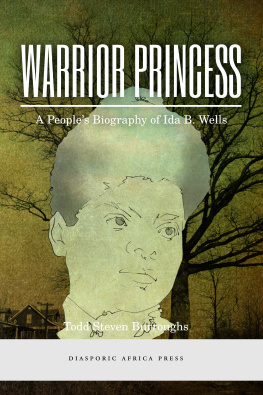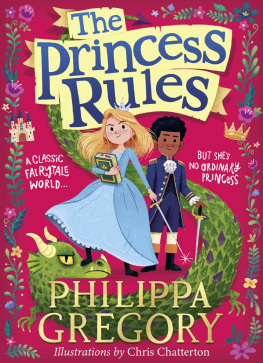Upendra Dharmadhikari - The Princess in Black!
Here you can read online Upendra Dharmadhikari - The Princess in Black! full text of the book (entire story) in english for free. Download pdf and epub, get meaning, cover and reviews about this ebook. year: 2014, publisher: Srishti Publ., genre: Detective and thriller. Description of the work, (preface) as well as reviews are available. Best literature library LitArk.com created for fans of good reading and offers a wide selection of genres:
Romance novel
Science fiction
Adventure
Detective
Science
History
Home and family
Prose
Art
Politics
Computer
Non-fiction
Religion
Business
Children
Humor
Choose a favorite category and find really read worthwhile books. Enjoy immersion in the world of imagination, feel the emotions of the characters or learn something new for yourself, make an fascinating discovery.
- Book:The Princess in Black!
- Author:
- Publisher:Srishti Publ.
- Genre:
- Year:2014
- Rating:5 / 5
- Favourites:Add to favourites
- Your mark:
- 100
- 1
- 2
- 3
- 4
- 5
The Princess in Black!: summary, description and annotation
We offer to read an annotation, description, summary or preface (depends on what the author of the book "The Princess in Black!" wrote himself). If you haven't found the necessary information about the book — write in the comments, we will try to find it.
The Princess in Black! — read online for free the complete book (whole text) full work
Below is the text of the book, divided by pages. System saving the place of the last page read, allows you to conveniently read the book "The Princess in Black!" online for free, without having to search again every time where you left off. Put a bookmark, and you can go to the page where you finished reading at any time.
Font size:
Interval:
Bookmark:
The Princess in Black!

SRISHTI PUBLISHERS & DISTRIBUTORS
N-16, C. R. Park
New Delhi 110 019
First published by
Srishti Publishers & Distributors in 2014
Copyright Upendra Dharmadhikari & Changali Anand, 2014
All characters in this book are fictitious, and any resemblance to real persons, living or dead, is coincidental.
The authors assert the moral right to be identified as the authors of this work.
All rights reserved. No part of this publication may be reproduced, stored in a retrieval system, or transmitted, in any form or by any means, electronic, mechanical, photocopying, recording or otherwise, without the prior written permission of the Publishers.
A tribute to Late Shri Dwarka Nath Dharmadhikari,
my grandfather, who taught me basics of storytelling
Upendra Dharmadhikari

To my Noor, Vidya
Changali Anand
Prologue
E choes of a horses gallop ring loud and clear through the still jungle. Birds perched on trees shift their necks, to the left, to the right. The pristine body of a deer, at full stretch, bursts through the faded foliage. The horse powers its stride in close pursuit. Trees and leaves of the forest, coloured brown covered in winters decay, are mute spectators.
A sharp, bearded face leans closer to the stallions ears; the master whispers silent encouragements.
The horse and its bearded master were part of a pack following a herd of deer. The master had set his sights and followed his target. The deer broke away from its herd; master and steed broke away from their pack.
The steed increases its pace; autumn leaves resting gently on the ground are blown away. The deer falls in sight of the man commanding his stallion. He steadies his torso, draws his arrow on the bow, taut, and releases it. The pointed tip slices through the silent air. Instincts of the deer warn it to change its course; its body deftly moves mid-air and the arrow misses its mark. A frown flashes on the face of the hunter.
Unknown to the huntsman, he is in the sight of another hunter: a natural predator ready to strike from the trees above. Black spots on golden skin glitter in the sun; the eyes of the leopard are firmly fixed on man and horse tearing through the floor of the forest. As the man strings another arrow, the leopard leaps from the tree.
The hands of time slow down: The hunter catches the leopard from the corner of his eye, image of the predator grows large on the riders pupils, but he cannot move, he cannot react. The leopards body crashes into rider and stallion, and for a brief moment, hunter and prey are united. White, brown, and yellow bodies of horse, leopard, and man roll on the ground providing colour and hue to the grey forest.
The rider gets up quickly, bits and pieces of brown foliage stuck in his elegant, bottle green robe. His white stallion lies motionless on the ground, the stillness of death about to set in. He tightens his grip on his sword, staring at the predator. The gaze of the rider is that of no ordinary man, but an emperor who will establish a dynasty that will be remembered through the annals of time.
The laws of the jungle, however, do not distinguish between emperor and commoner. You either hunt, or get hunted. Eyes of the leopard see just a man, a target that needs to be hunted down. It leaps forward. The rider does not hold back; he lunges forward removing his metal blade from its sheath.
The beast digs its paws into the leg of the bearded man, spooning flesh with its claws, drawing first blood. The rider grimaces, stifling his scream, blocking his pain, and slashes his metal blade across the paw of the beast. A swift straight cut gashes on its paw. The predator growls and takes a step back. Down on one knee, blood oozing out dripping like pins on the floor of the forest, the rider breathes long and hard trying to focus. He looks up only to see the leopard at arms length, ready to strike him down once again.
A bright white flash illuminates the scene.
It blinds the leopard temporarily. The bearded rider quickly shields his eyes, his hunters instinct drives him to sinks his sword into the gut of the animal a few heartbeats away. The leopard staggers and falls down; the silver blade embedded deep inside its gut.
The hunter falls on his back.
Still covering his eyes, the rider tries to identify the source of light, a light which saved his life. He observes a palm-sized diamond lying next to him shining brightly. The angle of the afternoon sun had hit the precious stone and illuminated it like a full moon.
He could not believe it. The stone he always carried with him had created a future when his present seemed a finite end. His left hand, smudged red with blood, grasps the big stone. The bright light fades, with a hue of red; the mans eyelids drooped.
In the distance, a faint rustle is heard. His eyes struggle open. The rustle grows louder and nears the rider. The man summons his will and stands his weakening body up. If this is another threat, he is ready to deal with it. The man, Babur, knew he was destinys child.
A white robe sashays amidst the faded foliage; naked feet walk to the victorious hunter; a gentle voice enquires of the bleeding man, Are you all right, my son?
A soft smile spread on Professor Narayan Shastris face. The brightest student in his class had said Dabur instead of Babur, the first Mughal Emperor.
Gentle laughter echoed across the wide walls of the classroom, which was sparsely occupied. History was not a popular subject for the present generation whose attention span was equivalent to the time it took to cook instant noodles. A motley group of students were in attendance on a cold, winter morning for their lecture with pullovers and shawls, the dress code of the morning. The long windows of the classroom were shut tightly in an attempt to keep the cold out and preserve any warmth the walls of the room held.
The bumbling student, a girl, flushed beet red. A Freudian slip perhapsNarayan noted to his own self.
Just a week ago, Dabur had sponsored a history quiz competition at Delhi University. Though the subject was not a popular one, the quiz had drawn many participants and a sizeable audience largely due to the presence of a Hindi film actor who was the chief guest of the event present to promote his film, a historical, which was releasing soon.
Narayan continued to smile. Small moments like these reaffirmed the professors belief that he had done the right thing by staying back. He had turned down an offer to teach Indian history at the prestigious Princeton University a couple of years ago. His exhaustive research on an ancient manuscript penned by Bahadur Shah Zafar had made him a rising star in the field of Historical Studies. The research paper contested that the manuscript contained a chemical equation, in code, to a potent weapon which could help an army win a losing battle in an instant. The idea was met with open ridicule as well as overwhelming praise.
Narayan, with his intellectual but eye-pleasing personality, soon found himself to be the face of Historical Studies an academic vertical which carried the baggage of being scholarly and boring. Narayan adjusted the frame of his spectacles.
C aptain Veer Pratap Singh paced restlessly around Professor Narayan Shastris cabin. He maintained a strict posture with his black blazer buttoned on. A high-ranking official at the Defence Intelligence Agency (DIA), he was used to instant obedience. The fact that a history professor had the nerve to put his agenda on hold irritated him.
Next pageFont size:
Interval:
Bookmark:
Similar books «The Princess in Black!»
Look at similar books to The Princess in Black!. We have selected literature similar in name and meaning in the hope of providing readers with more options to find new, interesting, not yet read works.
Discussion, reviews of the book The Princess in Black! and just readers' own opinions. Leave your comments, write what you think about the work, its meaning or the main characters. Specify what exactly you liked and what you didn't like, and why you think so.













